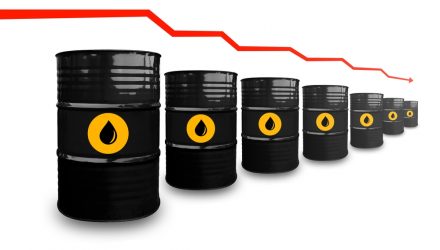The energy sector was the best-performing group in the S&P 500 in 2021 and 2022, and while such leadership is hard to maintain over three consecutive years, it was expected that energy equities and oil prices would matriculate to the upside again this year.
In the case of energy stocks, that’s not happening, as the S&P 500 Energy Index is lower by 8.24% year-to-date. Entering this year, one of the widely held views among commodities traders was that oil supply would outpace demand early in the year before reversing course in the back half of the year. Some strategists believe that those expectations may need to be altered.
“Although supply outstripped demand in the first quarter, the assumption was that the market would start to tighten from the second quarter onwards and be in deficit once again by the second half, which would lead to a rise in price,” noted Martijn Rats, Morgan Stanley’s global commodity strategist. “At the start of the year, this was also our thesis for how 2023 would play out. However, as of early May, it seems this narrative needs to change.”
Oil Give-and-Take
For oil bulls, that’s disappointing commentary because historical seasonal trends indicate that the summer months, owing to increased travel demand, are often favorable to crude prices. However, factors beyond the U.S. economy can and do play pivotal roles in oil’s price action.
Among the bull theses supporting a constructive outlook for crude at the start of 2023 were expectations that Chinese demand would surge and Russian output would decline. Neither of those scenarios are playing out in material fashion.
“On China, both the country’s crude imports and its refinery runs were already back at all-time highs in March, leaving little room for further improvement,” added Rats. “On Russia, oil production has fallen from recent peaks, but probably only about 400,000 barrels a day. From here, we would argue that it’s becoming increasingly unlikely it will fall much further. The EU’s crude and product embargoes have been in place for some time now. Russian oil that flows now will probably continue to flow.”
Looking farther out, it’s possible that supply/demand will turn favorable for oil bulls. Since the start of the coronavirus pandemic, major oil producers have prioritized balance sheet strength over capital expenditures. Said another way, if demand suddenly increases, the supplies may not be there to meet because producers reigned in capital spending.
Those efforts have other benefits. For example, the world’s six largest U.S.-listed integrated oil firms have a combined $160 billion in cash on their balance sheets.
For more news, information, and analysis, visit the Alternatives Channel.
The opinions and forecasts expressed herein are solely those of Tom Lydon, and may not actually come to pass. Information on this site should not be used or construed as an offer to sell, a solicitation of an offer to buy, or a recommendation for any product.








